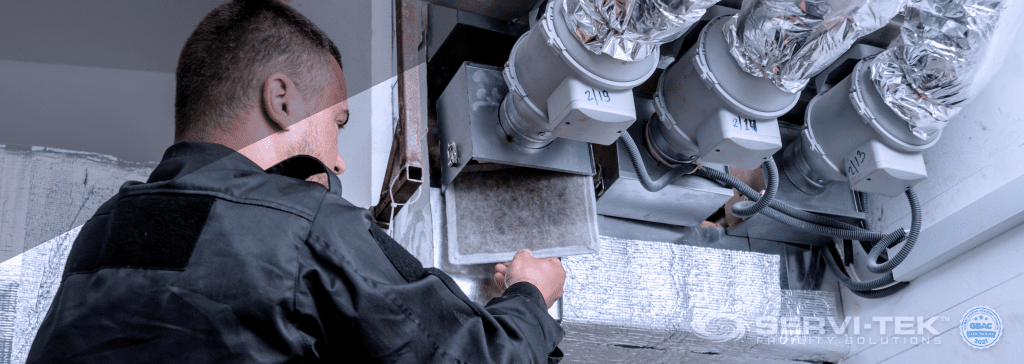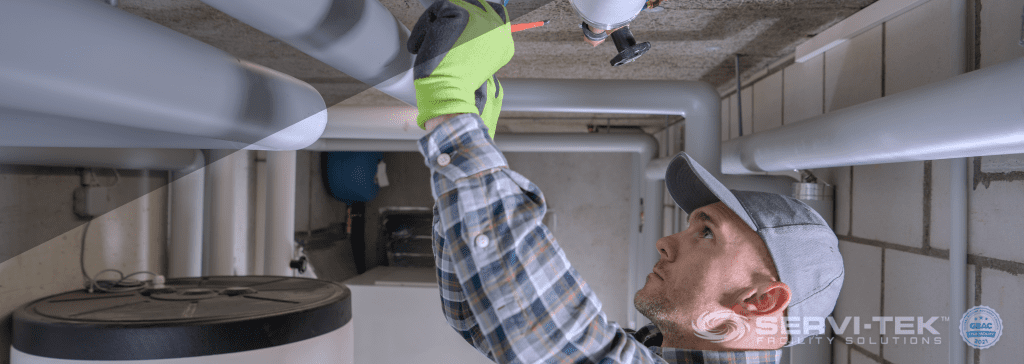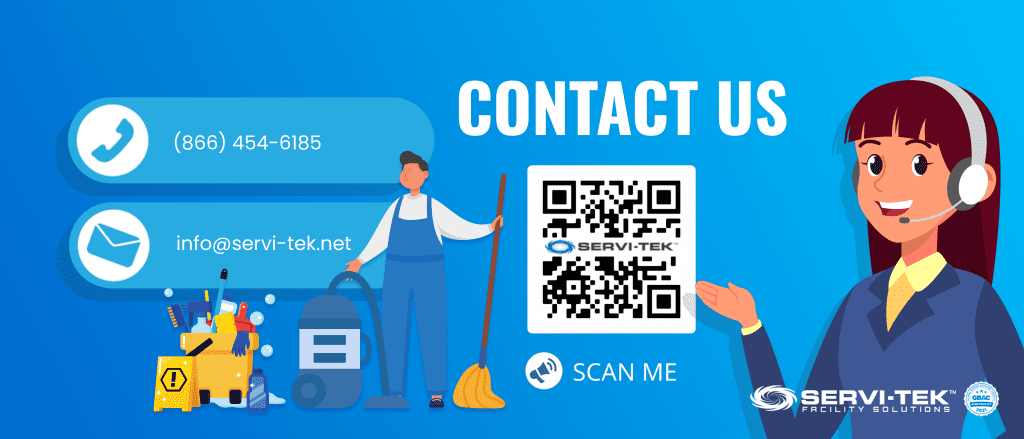Spring is just around the corner, and for facility managers, this season represents a crucial time to prepare buildings for the year ahead. Winter’s challenges—including fluctuating temperatures, increased foot traffic, and potential wear on equipment—can take a toll on any facility. A thorough inspection in March is an essential step to identify potential issues, prevent costly repairs, and optimize your building’s performance.
In this blog, we’ll discuss why facility inspections should be a priority, the key areas to focus on, and how proactive measures can save time and resources. By integrating inspections into your March to-do list, you’ll set your facility up for a smooth and productive spring season.
Why Facility Inspections Are Essential

Facility inspections are more than a routine task; they are a vital tool for maintaining the safety, efficiency, and functionality of your property. Here are some compelling reasons to schedule inspections this March:
1. Address Winter Wear and Tear
Winter conditions can be harsh on your building’s structure and systems. Common issues include:
- Roof Damage: Snow, ice, and fluctuating temperatures can cause cracks, leaks, or pooling water.
- HVAC Stress: Heating systems often work overtime in winter, potentially leading to wear or inefficiency.
- Parking Lot Deterioration: Freeze-thaw cycles can create potholes or cracks in pavement.
Inspections can uncover these issues early, preventing further damage as spring approaches.
2. Enhance Energy Efficiency
March is the perfect time to optimize energy use before warmer temperatures increase cooling demands. An inspection can identify:
- Drafty windows or doors.
- Inefficient HVAC systems.
- Lighting systems that could benefit from upgrades, such as LEDs.
Implementing energy management solutions can reduce utility costs and contribute to sustainability goals.
3. Ensure Tenant Satisfaction
Tenants expect a safe, clean, and well-maintained facility. Neglecting inspections can lead to:
- Unpleasant surprises like plumbing leaks or HVAC failures.
- Health risks from poor air quality or unsanitary conditions.
- Frustration due to visible maintenance issues, such as peeling paint or broken fixtures.
By addressing these concerns proactively, you can improve tenant retention and satisfaction.
4. Stay Ahead of Compliance Requirements
For industries like healthcare and hospitality, regulatory compliance is non-negotiable. Routine inspections help ensure:
- Cleaning services for medical facilities meet health and safety standards.
- Equipment, such as fire extinguishers and emergency lighting, is functioning properly.
- Documentation is up-to-date for any required certifications or inspections.
Staying compliant protects your facility from penalties and maintains its reputation.
Key Areas to Focus on During Inspections

A comprehensive inspection should cover all critical areas of your facility. Here are some key components to prioritize:
1. Building Exterior
- Roofing: Check for leaks, loose shingles, or structural issues.
- Windows and Doors: Inspect seals and frames for drafts or damage.
- Parking Lots: Look for cracks, potholes, or faded line markings.
2. HVAC Systems
Heating and cooling systems are essential for maintaining comfort and air quality. Inspect:
- Filters, coils, and ducts for dirt or blockages.
- System efficiency and potential refrigerant leaks.
- Thermostat settings and calibration.
Routine maintenance ensures optimal performance and prevents costly repairs.
3. Plumbing Systems
Plumbing issues can quickly escalate if left unchecked. Inspect:
- Pipes and fixtures for leaks or corrosion.
- Water pressure and temperature consistency.
- Drains for clogs or slow drainage.
Proactive maintenance prevents water damage and reduces waste.
4. Energy Systems
Evaluate energy use and identify opportunities for improvement, such as:
- Upgrading to energy-efficient lighting.
- Installing programmable thermostats.
- Insulating areas prone to heat loss.
Energy-efficient buildings are cost-effective and environmentally friendly.
5. Janitorial and Cleaning Services
Cleanliness is a cornerstone of facility management. Assess:
- High-touch areas for proper disinfection.
- Flooring for wear, stains, or damage.
- Restrooms and common areas for cleanliness and stock levels.
Partnering with experts in janitorial services near me ensures consistent results. Servi-Tek Facility Solutions provides tailored cleaning services to help you meet these goals.
The Cost of Neglecting Inspections

Skipping facility inspections can lead to significant consequences, including:
1. Expensive Emergency Repairs
Small issues, like a minor roof leak or an HVAC filter clog, can escalate into major problems requiring costly repairs or replacements.
2. Lost Revenue
Unaddressed maintenance concerns can:
- Decrease tenant retention rates.
- Reduce the marketability of your facility to prospective clients.
3. Safety Risks
Deferred maintenance increases the likelihood of:
- Slip-and-fall accidents due to poorly maintained flooring.
- Health hazards from mold or poor indoor air quality.
- Fire hazards from outdated electrical systems.
4. Regulatory Fines
Non-compliance with health, safety, or environmental regulations can result in fines, penalties, or even shutdowns.
Actionable Steps for Proactive Inspections

To make inspections an integral part of your facility management strategy, follow these steps:
1. Schedule Inspections Regularly
Create a maintenance calendar to ensure routine inspections are performed on time. Include seasonal tasks, such as HVAC servicing in spring and fall.
2. Use a Checklist
Develop a comprehensive checklist to guide inspections. Include areas such as:
- Structural components (roof, walls, flooring).
- Mechanical systems (HVAC, plumbing, electrical).
- Safety equipment (fire extinguishers, alarms).
3. Leverage Technology
Adopt tools like maintenance management software to:
- Track inspection schedules and tasks.
- Store records and documentation.
- Monitor equipment performance in real time.
Technology simplifies the inspection process and ensures nothing is overlooked.
4. Partner with Professionals
Collaborate with experts in facility maintenance solutions to:
- Conduct specialized inspections, such as HVAC tune-ups or energy audits.
- Provide detailed reports with actionable recommendations.
- Implement preventative maintenance for commercial buildings.
Experienced providers, such as Servi-Tek Facility Solutions, bring expertise and resources to enhance your efforts.
5. Budget for Maintenance
Allocate funds specifically for inspections and routine maintenance. A well-planned budget minimizes the temptation to defer essential tasks.
6. Train Your Team
Ensure your staff understands the importance of inspections and is equipped to:
- Recognize signs of potential issues.
- Perform basic maintenance tasks.
- Communicate effectively with vendors or service providers.
A skilled team is a valuable asset in maintaining your facility.
Benefits of March Inspections

By prioritizing inspections this March, you can enjoy several benefits:
- Cost Savings: Addressing issues early prevents expensive repairs or replacements.
- Improved Efficiency: Optimized systems reduce energy use and operational costs.
- Tenant Retention: A clean, safe, and well-maintained facility enhances tenant satisfaction.
- Regulatory Compliance: Staying ahead of inspections ensures you meet industry standards.
- Peace of Mind: Knowing your facility is in excellent condition allows you to focus on other priorities.
Have Questions? Contact Us for Expert Guidance
Facility inspections are a critical part of maintaining a safe, efficient, and attractive property. By making them a priority this March, you can identify and address issues early, saving time and money in the long run.
If you’re unsure where to start or need assistance, contact us for expert guidance and support. Our team is here to help you develop a proactive maintenance strategy that ensures your facility operates at its best year-round.



